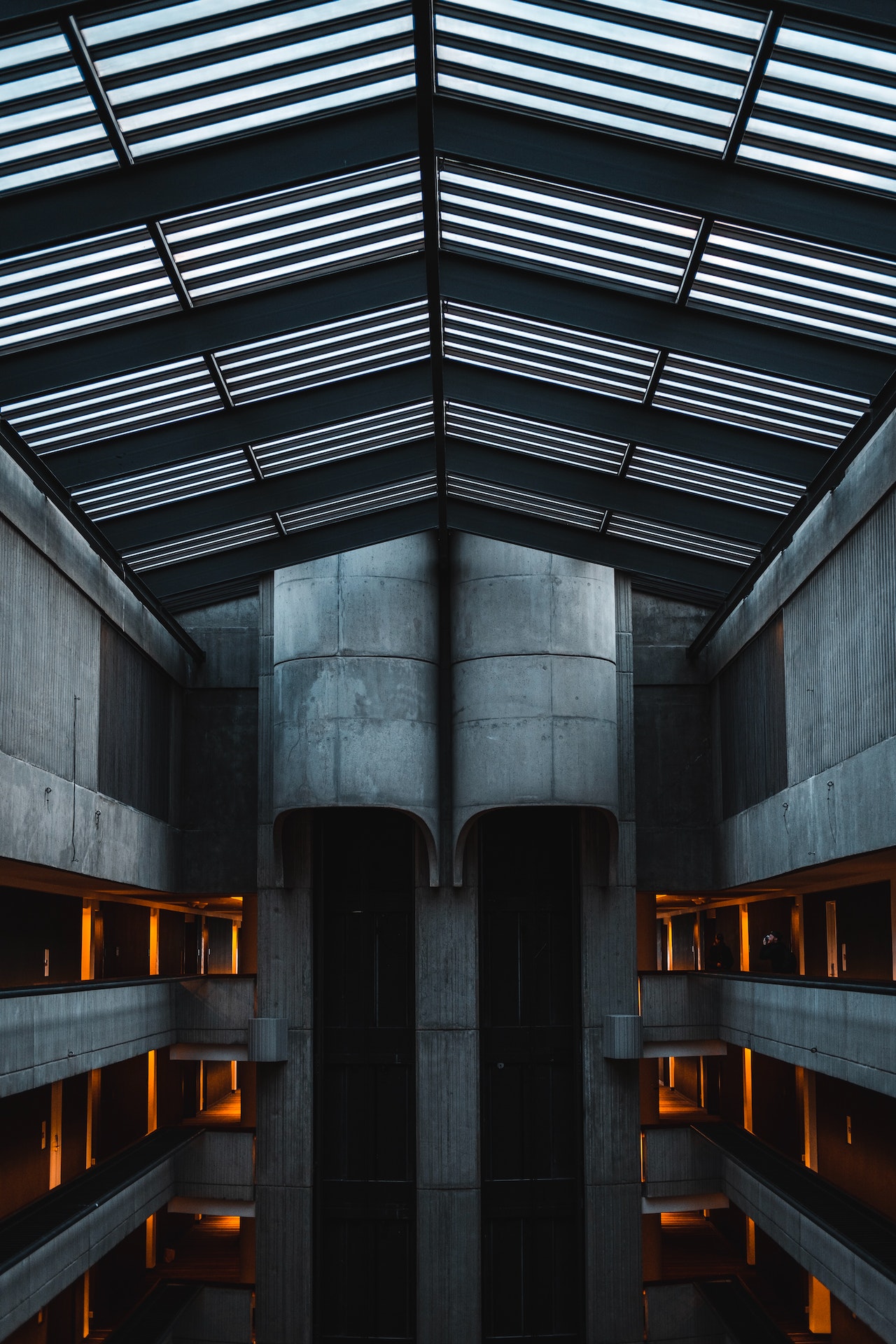Brutalism - The Beauty In Brutality
Brutalism is a controversial architectural style that emerged in the mid-20th century. It stands out because it uses exposed concrete, has sharp angles, and looks rough and unfinished.
Author:George EvansApr 05, 20235.5K Shares461.4K Views

Brutalismis a controversial architectural style that emerged in the mid-20th century. Its distinctive features include the use of exposed concrete, sharp angles, and a raw, unfinished aesthetic.
While Brutalism has been both celebrated and reviled over the years, it remains an influential style that has had a significant impact on modern architecture.
In this article, we will explore the history and characteristics of Brutalism, as well as its legacy and ongoing relevance in contemporary architecture.
What Is Brutalism?
Brutalism is an architectural style that emerged in the mid-20th century and is characterized by a rugged, raw and unfinished appearance.
The term "Brutalism" comes from the French word for "raw," and refers to the exposed concrete that is often used in the construction of buildings in this style.
Brutalist buildings are typically large, blocky and angular, and often feature repetitive geometric patterns. This style of architecture was popularized in the post-World War II era as a symbol of the rebuilding and progress of many cities around the world.
While the Brutalist style has fallen out of favor in recent decades, many of its buildings remain important and iconic examples of 20th-century architecture.

Brutalist Architecture in 6 Minutes: Ugly or Beautiful? 🤔
Origins Of Brutalism
Brutalism was not just a style of architecture, but also a philosophy that aimed to express an honest and raw materiality in design.
The architects who embraced the style believed that by stripping away the veneer of decoration and embracing the inherent qualities of materials like concrete, they could create buildings that were not only aesthetically striking but also deeply meaningful.
One of the early proponents of Brutalism was the Swiss architect Le Corbusier, whose work in the 1950s and 60s helped to define the style.
His use of béton brut (raw concrete) in projects such as the Unité d'Habitation in Marseille and the National Museum of Western Art in Tokyo set the tone for the movement.
In the United Kingdom, Brutalism emerged as a response to the need for large-scale housing and civic projects following the devastation of World War II.
Architects such as Alison and Peter Smithson and Ernő Goldfinger used concrete to create bold, sculptural forms that were often criticized for their perceived ugliness and lack of humanity.
Despite the controversy, Brutalism had a lasting impact on architecture and design. Its influence can be seen in the work of contemporary architects such as Herzog & de Meuron, who have used concrete to create dynamic and expressive buildings such as the Tate Modern in London and the National Stadium in Beijing.
Characteristics Of Brutalism
Brutalist buildings are often characterized by their use of exposed concrete, which is left untreated or roughly finished to emphasize its texture and natural color.
The buildings often feature bold, geometric forms, with sharp angles and dramatic, soaring curves.
Brutalist buildings are typically massive and monolithic, with a strong sense of weight and solidity. They often feature repetitive patterns, with modular elements that are repeated across the facade.
Brutalist buildings are also often criticized for their perceived lack of ornamentation and their disregard for the surrounding urban environment.
Many Brutalist structures are criticized for being cold and uninviting, with a severe and imposing presence that can seem out of place in a more traditional or historic setting.
The Legacy Of Brutalism
Despite its controversial reputation, Brutalism has left an indelible mark on the architectural landscape of many cities around the world.
Some of the most iconic and celebrated Brutalist structures include the Boston City Hall, the National Theatre in London, and the Habitat 67 housing complex in Montreal.
In recent years, there has been a growing appreciation for Brutalism and a renewed interest in preserving these iconic buildings.
Many architectural historians and preservationists argue that Brutalist structures represent an important chapter in the history of modern architecture, and that they continue to inspire and influence architects and designers today.
The Future Of Brutalism
While Brutalism remains a divisive and controversial architectural style, it is clear that it has had a lasting impact on the built environment. As cities around the world continue to grow and evolve, it is likely that many Brutalist structures will face challenges and threats to their preservation.
However, with a growing appreciation for the beauty and significance of these buildings, there is hope that many of these iconic structures will be saved and celebrated for generations to come.
Brutalism may have been born out of a desire to reject the minimalist aesthetics of modernism, but its legacy has been far-reaching and enduring.
With its bold forms and raw materials, Brutalism represents a unique and compelling chapter in the history of architecture, and its influence can still be felt in the work of many contemporary architects and designers.
People Also Ask
What Are The Key Features Of Brutalist Architecture?
Brutalist architectureis characterized by its use of raw concrete, angular forms, and expressive sculptural details. Buildings are often massive and imposing, with a focus on functionality and a rejection of decorative elements.
What Are The Advantages And Disadvantages Of Brutalist Architecture?
The advantages of Brutalist architecture include its durability, flexibility, and ability to create dramatic and expressive forms.
However, its imposing and sometimes stark aesthetic can be divisive, and the use of raw concrete can result in buildings that are difficult to maintain and prone to weathering.
What Are Some Famous Examples Of Brutalist Architecture?
Famous examples of Brutalist architecture include the Boston City Hall, the National Theatre in London, and the Park Hill housing estate in Sheffield, UK.
Is Brutalism Making A Comeback In Contemporary Architecture?
While Brutalism fell out of favor in the 1980s and 1990s, there has been a renewed interest in the style in recent years.
Some contemporary architects are exploring new ways to use raw concrete and incorporate Brutalist elements into their designs, while others are re-evaluating the historical significance of Brutalism and its role in shaping the built environment.
Final Thought
Brutalism may have its fair share of criticisms, but it remains an influential architectural movement that has left its mark on the world.
Its focus on functionality, raw concrete, and bold forms has inspired many architects and designers to experiment with new forms and materials.
While Brutalism may not be everyone's cup of tea, its significance in the history of architecture cannot be denied.
It will continue to inspire and influence future generations of architects, as well as spark debate and conversation about the role of architecture in society.

George Evans
Author
George Anderson, an exceptional architectural designer, envisions and brings to life structures that transcend the realm of imagination. With an unwavering passion for design and an innate eye for detail, George seamlessly blends form and function, creating immersive spaces that inspire awe.
Driven by a deep appreciation for the interplay of space, light, and materials, George's innovative approach redefines the possibilities of architectural design. His visionary compositions leave an indelible mark, evoking a sense of wonder and transforming the built environment.
George Anderson's transformative designs and unwavering dedication continue to shape the architectural landscape, pushing the boundaries of what is possible and inspiring generations to come.
Latest Articles
Popular Articles